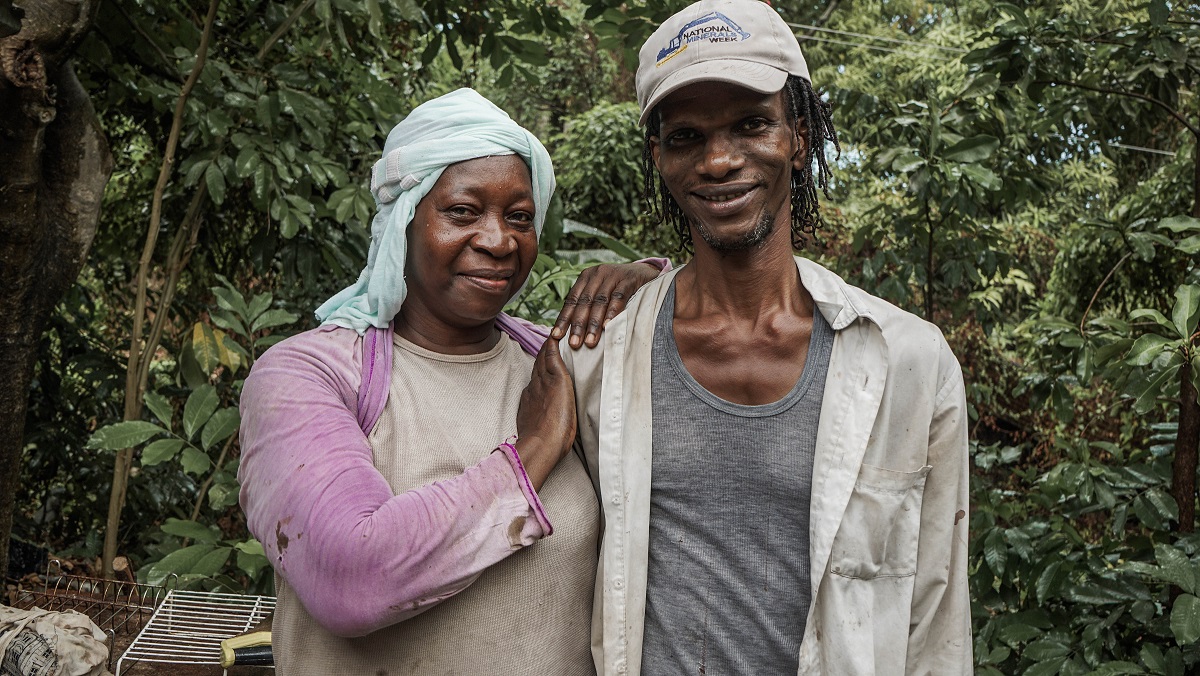The MVI segment of the study found that overall, respondents were most vulnerable with respect to mental health, social protection and assistance. (File Photo/ UNDP Jamaica photo)
Download Report
[Kingston, Jamaica, 27 November 2021 – A comprehensive study of the Impact of COVID-19 in Jamaica is recommending a suite of digital solutions to reduce the vulnerability of the most impacted Jamaicans, including mobile registrations, a data hub and policy platform and preparatory work to accelerate digital access to all.
The study, titled Socio-Economic Impact Assessment of COVID 19 and Policy Options for Jamaica, was funded and commissioned by the United Nations Development Programme (UNDP) and carried out by the Sir Arthur Lewis Institute for Social and Economic Studies (SALISES) and Caribbean Policy Research Institute (CAPRI) one year after the advent of the pandemic. Findings, based on interviews with 3194 respondents and secondary research was unveiled at a recent webinar jointly hosted by UNDP, SALISES and CAPRI.
The study specifically offered UNDP's support in a number of areas related to its core mandate to reduce poverty, including proactive mobile registration and engagement of hard-hit vulnerable groups to facilitate automatic identification and tailored support in a more targeted and seamless manner. “The UNDP has a range of tools that can be readily deployed to support these initiatives,” the report stated.
In a wide-ranging policy options segment, the report also recommended a Data Hub and Policy Lab platform to facilitate the monitoring and evaluation of a wide range of programmes designed to reduce vulnerability of identified groups. “This could be integrated with platforms currently monitoring progress in the fulfilment of the UN 2030 Agenda and Vision 2030 Jamaica and be available to Government agencies and development partners to inform policy development and implementation,” the study concluded.
The study also offered UNDP support for the implementation of its Digital Readiness Assessment (DRA) tool, most recently used in Grenada. The DRA can be used to map the status of Jamaica’s digital transformation with the aim of accelerating transition to a digital society, the study outlined.
UNDP's Multidimensional Vulnerability Index used for 1st time in Jamaica
Specific policy recommendations for vulnerable groups derived from the study’s application of UNDP’s Multidimensional Vulnerability Index (MVI) to analyze the exposure and response of key population groups to COVID-19. UNDPs MVI was deployed by UNDP’s Surge Data Hub for the first time in Jamaica, to rank local vulnerability according to: COVID-19 status; access to health center; disability; mental health; wellbeing; food consumption; food quality; school attendance; employment/ retired; income; social protection; and assistance.
The MVI segment of the study found that overall, respondents were most vulnerable with respect to mental health, social protection and assistance, disclosed UNDP SURGE Data Hub economist Ulises Munguia, in his presentation.
Most vulnerable parish - St Mary
He said Saint Mary was assessed as the most vulnerable parish, and St. Thomas, Trelawny and Westmoreland, the least vulnerable with the main differences between Saint Mary, and the least vulnerable parish, Trelawny being access to health centres, income, food quality and social protection.
“Seventy percent of individuals in urban areas are vulnerable, while only 63% of those in the rural areas. Urban areas bear a disproportionate load of vulnerability in contrast with their population share” he reported. Mr Munguia said interestingly, respondents with the lowest household income did not necessarily have the highest level of vulnerability.
Jamaican economy contracted by one fifth
Other COVID-19 impact findings unveiled by a joint SALISES/CAPRI team of Professor Aldrie Henry-Lee (SALISES, Mona), Dr Arlene Bailey (SALISES, Mona), Dr. Damien King (CAPRI), and Ms. Nicola Boyd (CAPRI) indicated that Money (76.1%); Food (49.9%); Masks and Sanitizers (41.8%); and Health Insurance (28.1%) in that order, were the priority requests of respondents.
The team revealed that the Jamaican economy contracted by one fifth and lost 150 000 jobs at its lowest point. Nearly 50 per cent of businesses reported reduction in sales and more than 50% indicated that their operation would not last more than 6 months.
Hardest hit industries were the entertainment, cultural and creative sector which suffered losses amounting to $195 billion and 76,000 jobs; hotels and restaurants which contracted 88% with 75% of workers laid off; and transport, storage, communications which contracted by 20 percent at the lowest point.
Findings related to social protection also indicated that the pandemic deepened inequalities. “Only 43% of the respondents were beneficiaries of a social protection programme to cushion the impact of COVID-19 and only 53 per cent of Path Beneficiaries had accessed COVID-19 PATH grants,” the team disclosed. The study also found that
55.7% of PATH beneficiaries stated that they did not know how to apply for support to reduce negative impact of COVID-19.
Study confirms high level of vaccine hesitancy
The study was also able to confirm a high level of vaccine hesitancy in Jamaica, with only 33.9% of the sample indicating that they would take the vaccine.
The Socio-Economic Impact Assessment of COVID-19 and Policy Options for Jamaica is the first comprehensive assessment providing a definitive record of the impact and coping measures utilized in the management of the COVID-19 pandemic in Jamaica. The study also provides the first systematic identification of the vulnerable segments of the society who have been negatively impacted by the pandemic, as well as policy options that can be used to reduce the impact of this and similar crises in the future. The Impact Assessment is also the first study for Jamaica that uses a Multidimensional Vulnerability Index (MVI) as a complement to the results and analyses from the survey and secondary sources.

 Locations
Locations

